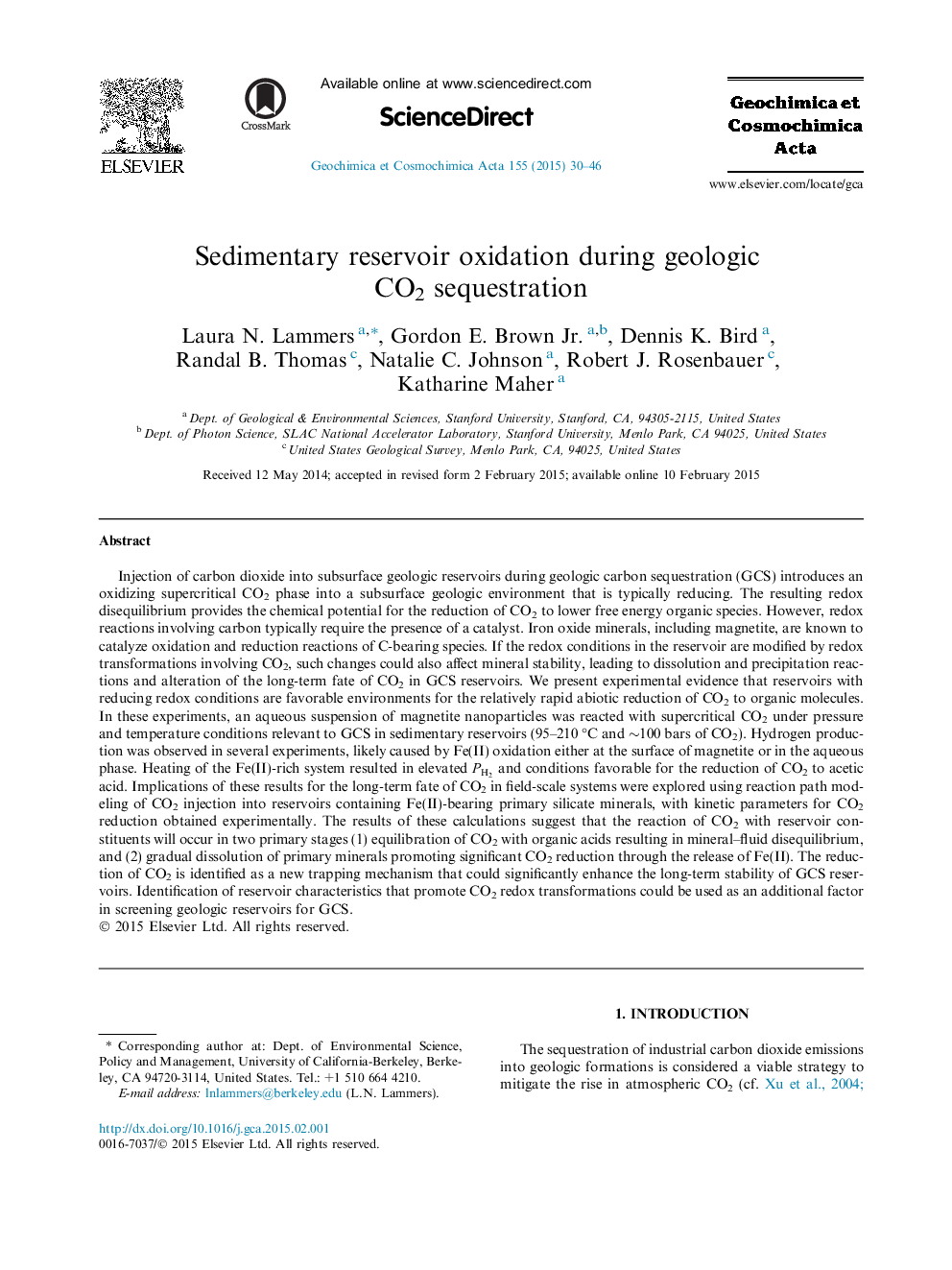| کد مقاله | کد نشریه | سال انتشار | مقاله انگلیسی | نسخه تمام متن |
|---|---|---|---|---|
| 4701956 | 1638002 | 2015 | 17 صفحه PDF | دانلود رایگان |
Injection of carbon dioxide into subsurface geologic reservoirs during geologic carbon sequestration (GCS) introduces an oxidizing supercritical CO2 phase into a subsurface geologic environment that is typically reducing. The resulting redox disequilibrium provides the chemical potential for the reduction of CO2 to lower free energy organic species. However, redox reactions involving carbon typically require the presence of a catalyst. Iron oxide minerals, including magnetite, are known to catalyze oxidation and reduction reactions of C-bearing species. If the redox conditions in the reservoir are modified by redox transformations involving CO2, such changes could also affect mineral stability, leading to dissolution and precipitation reactions and alteration of the long-term fate of CO2 in GCS reservoirs. We present experimental evidence that reservoirs with reducing redox conditions are favorable environments for the relatively rapid abiotic reduction of CO2 to organic molecules. In these experiments, an aqueous suspension of magnetite nanoparticles was reacted with supercritical CO2 under pressure and temperature conditions relevant to GCS in sedimentary reservoirs (95–210 °C and ∼100 bars of CO2). Hydrogen production was observed in several experiments, likely caused by Fe(II) oxidation either at the surface of magnetite or in the aqueous phase. Heating of the Fe(II)-rich system resulted in elevated PH2PH2 and conditions favorable for the reduction of CO2 to acetic acid. Implications of these results for the long-term fate of CO2 in field-scale systems were explored using reaction path modeling of CO2 injection into reservoirs containing Fe(II)-bearing primary silicate minerals, with kinetic parameters for CO2 reduction obtained experimentally. The results of these calculations suggest that the reaction of CO2 with reservoir constituents will occur in two primary stages (1) equilibration of CO2 with organic acids resulting in mineral–fluid disequilibrium, and (2) gradual dissolution of primary minerals promoting significant CO2 reduction through the release of Fe(II). The reduction of CO2 is identified as a new trapping mechanism that could significantly enhance the long-term stability of GCS reservoirs. Identification of reservoir characteristics that promote CO2 redox transformations could be used as an additional factor in screening geologic reservoirs for GCS.
Journal: Geochimica et Cosmochimica Acta - Volume 155, 15 April 2015, Pages 30–46
